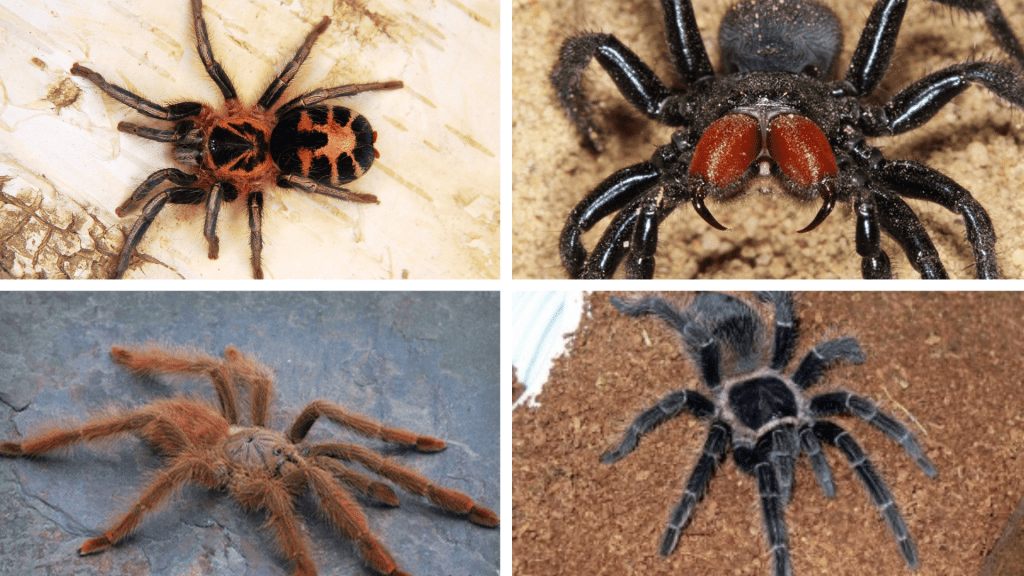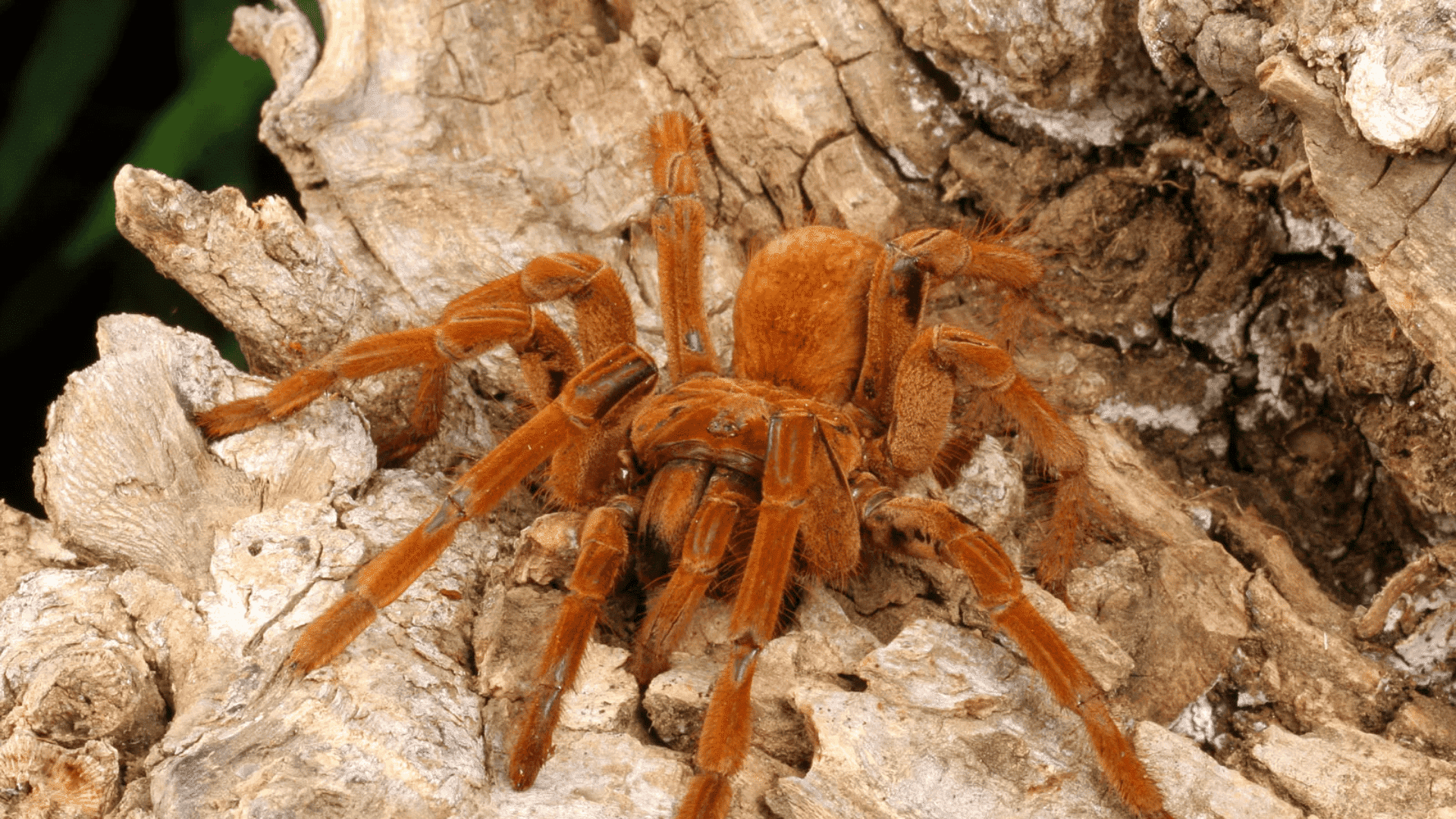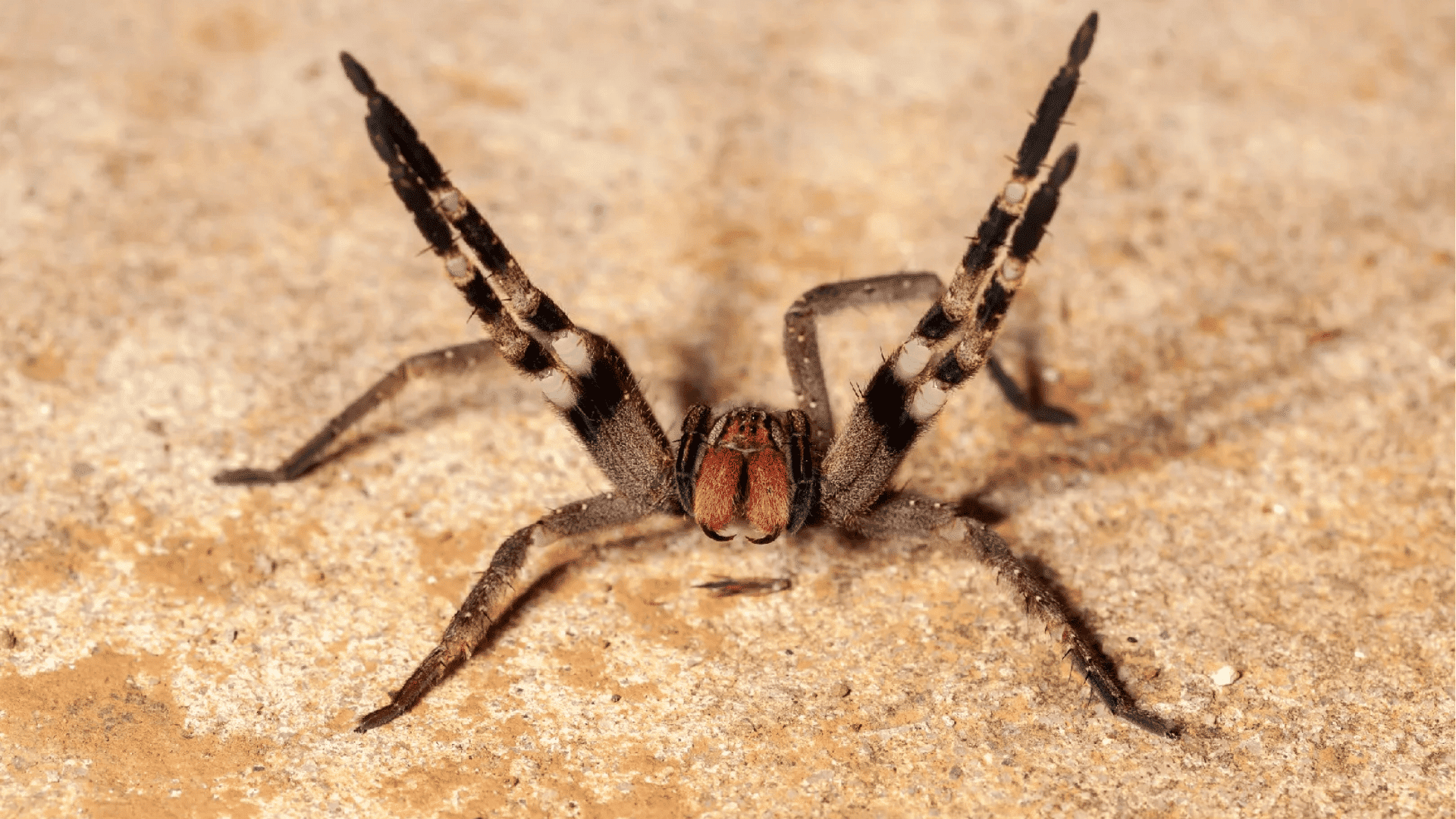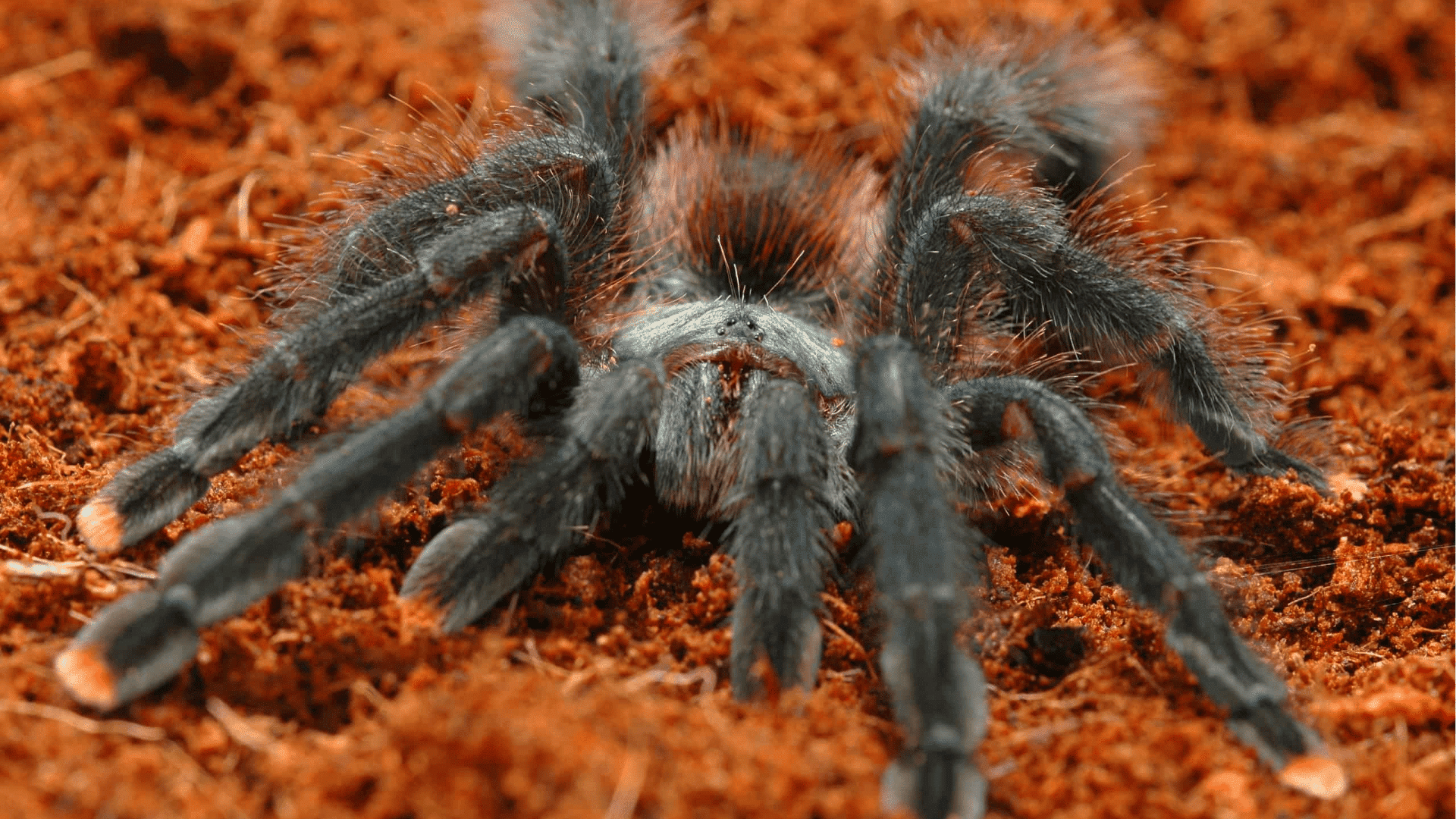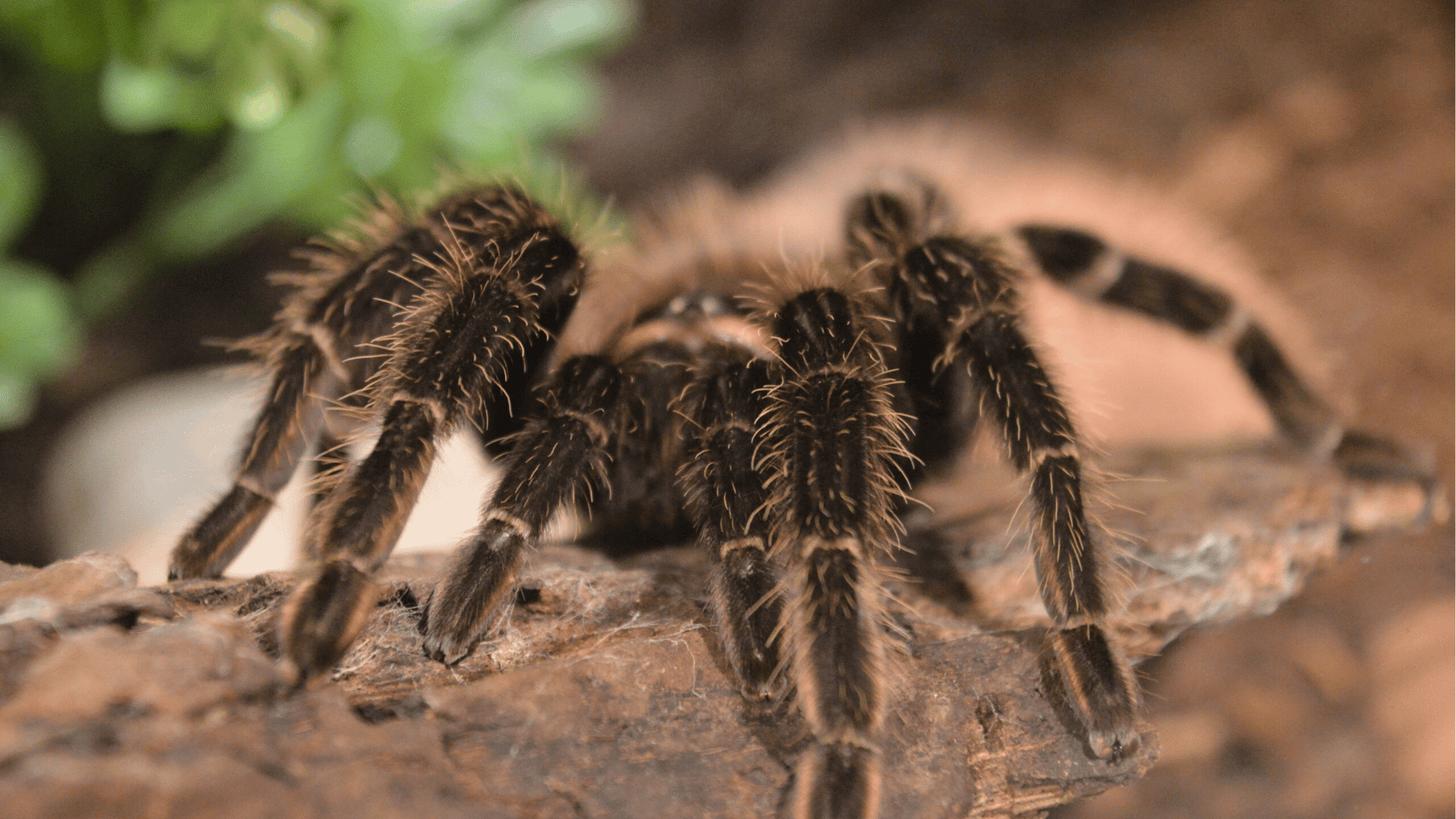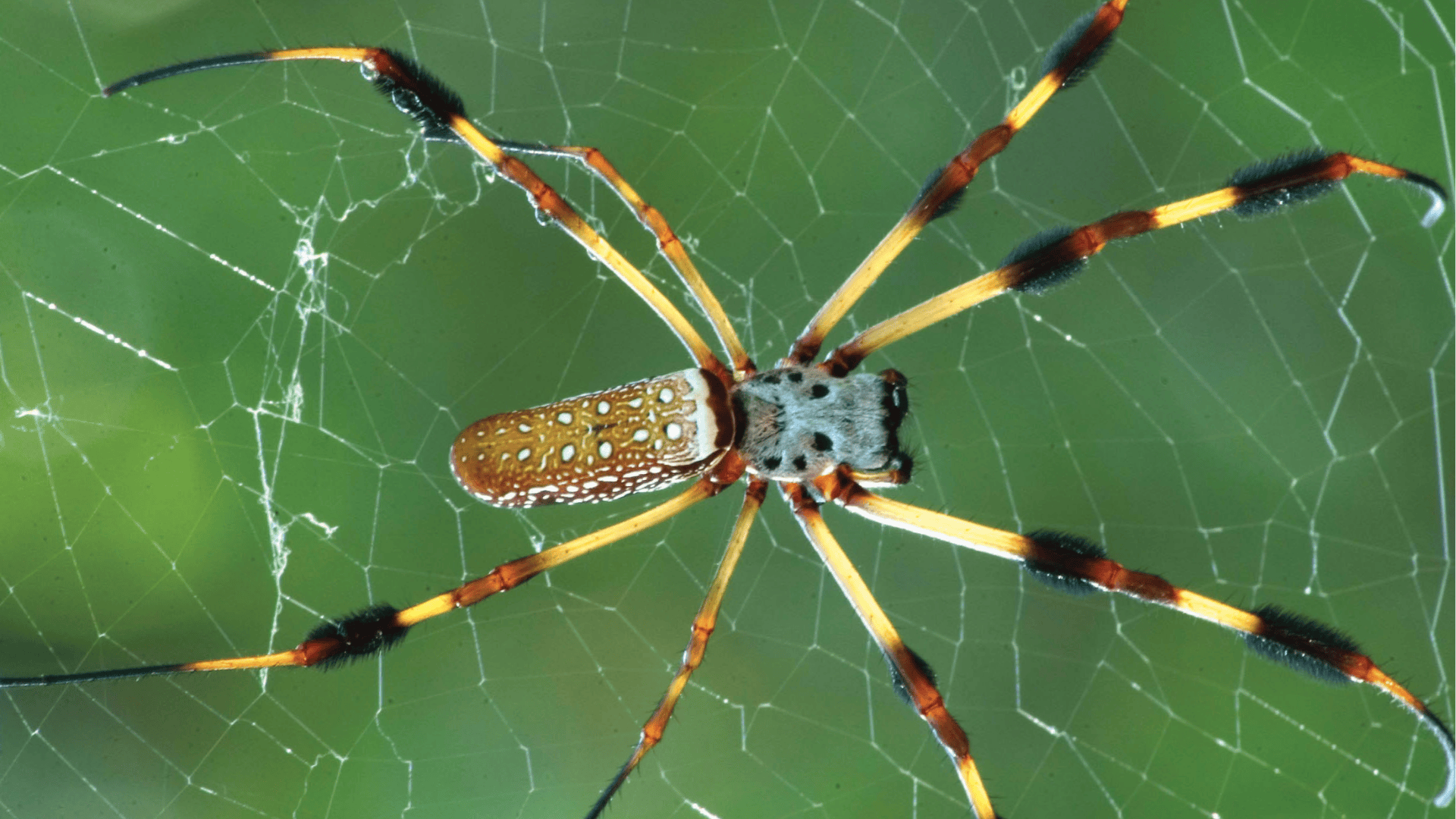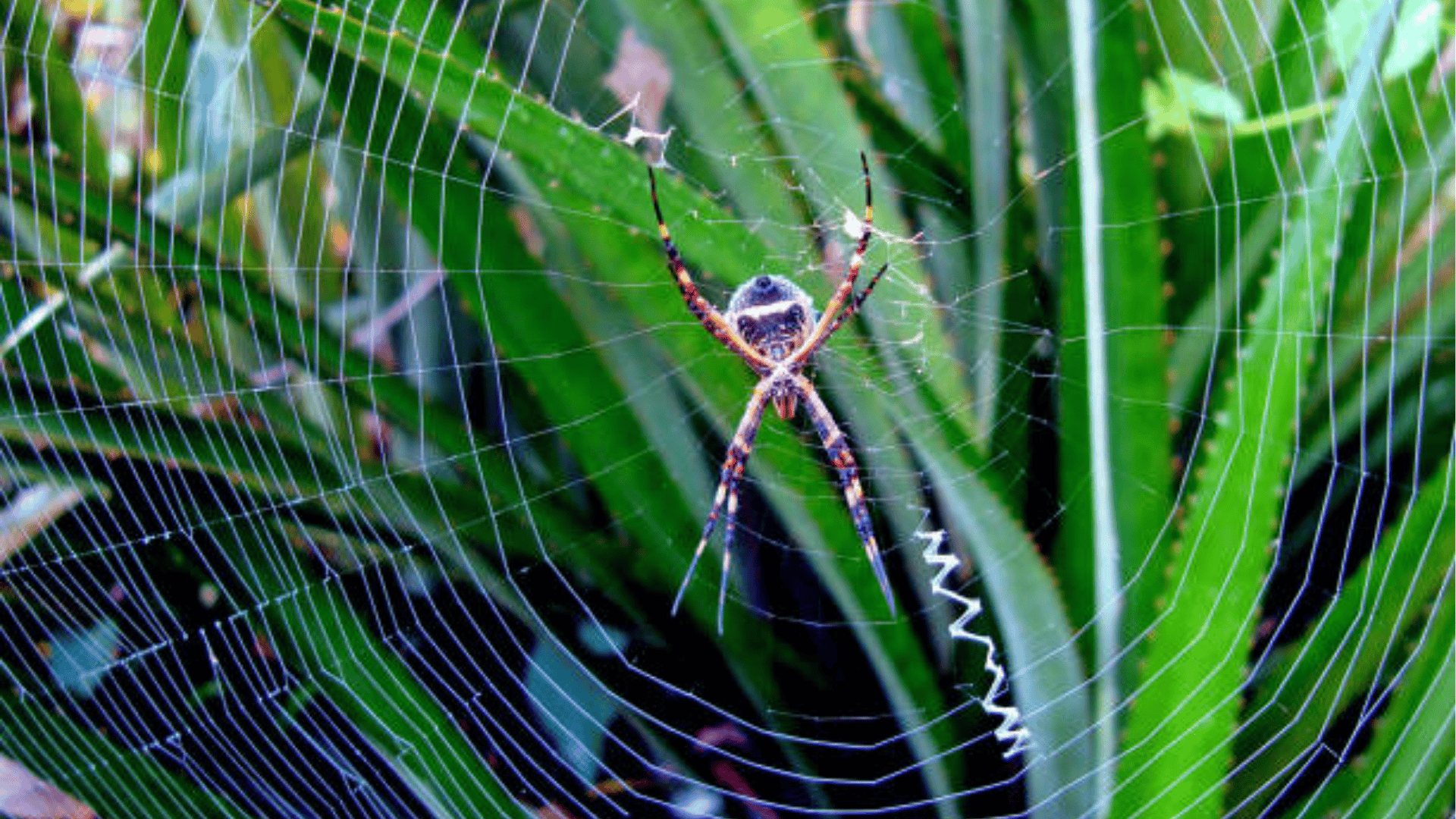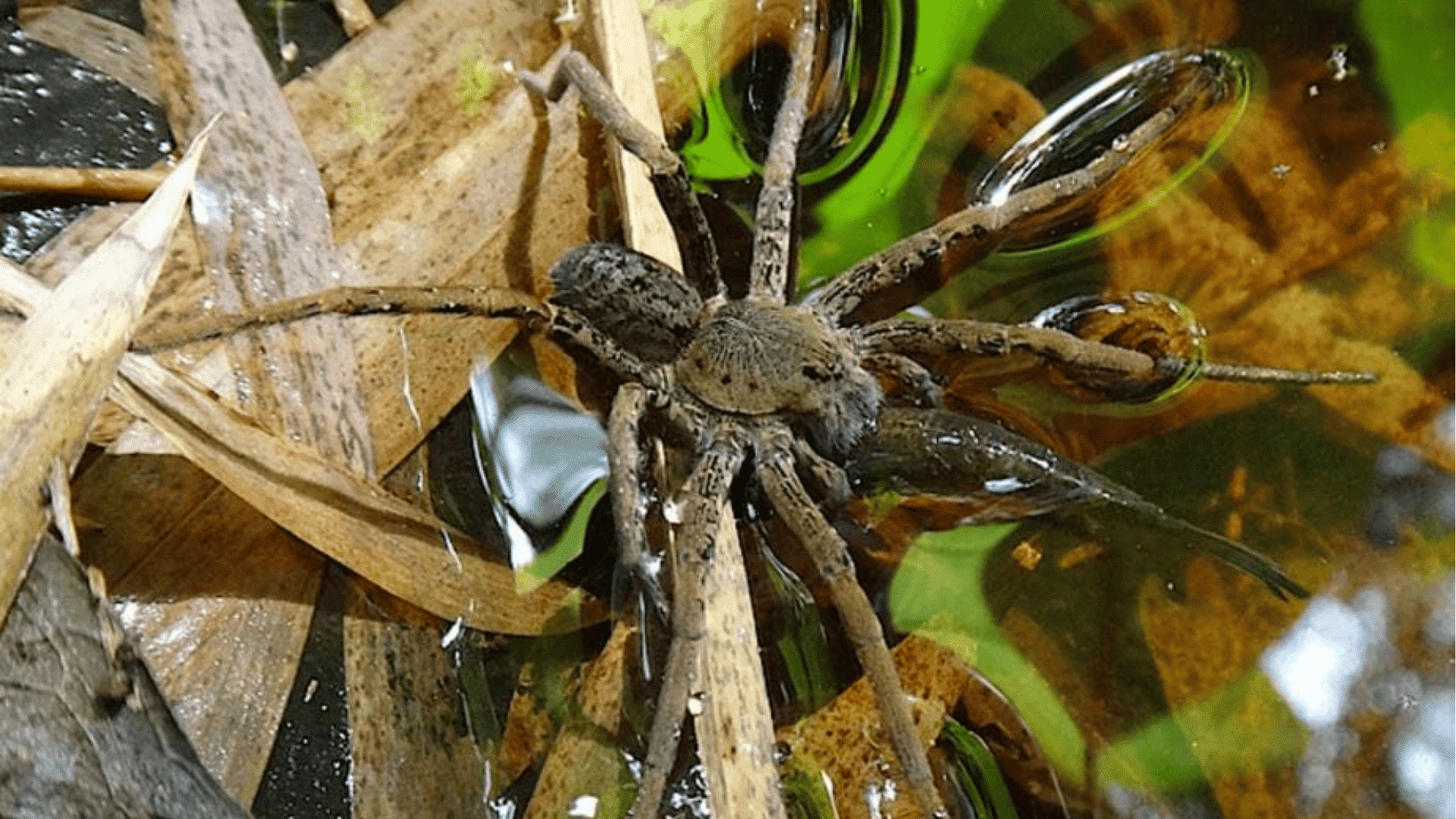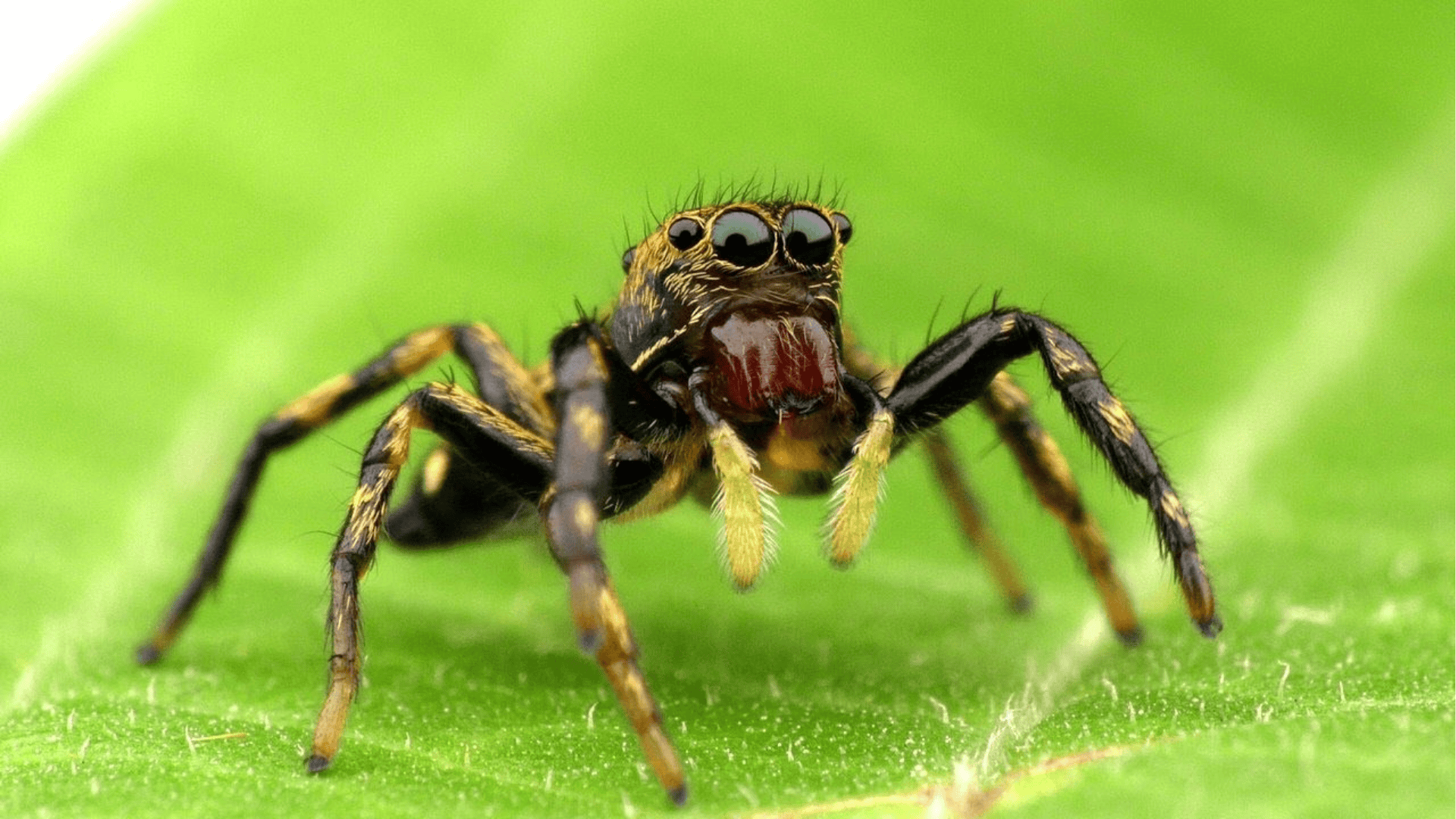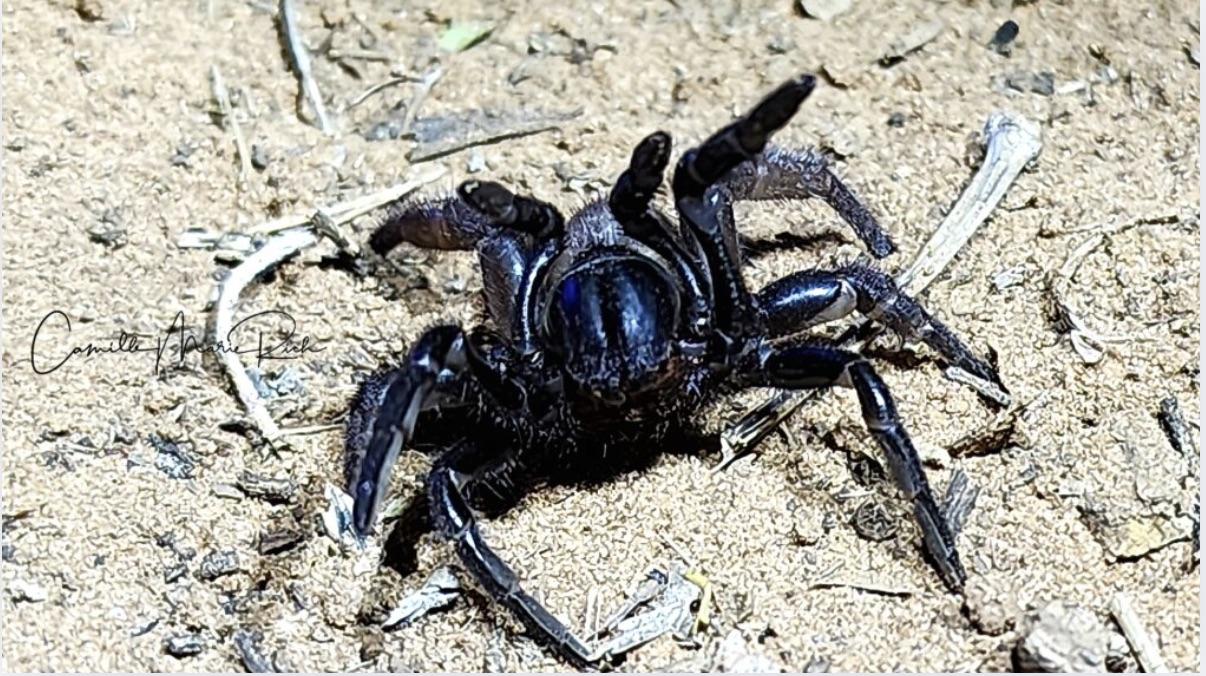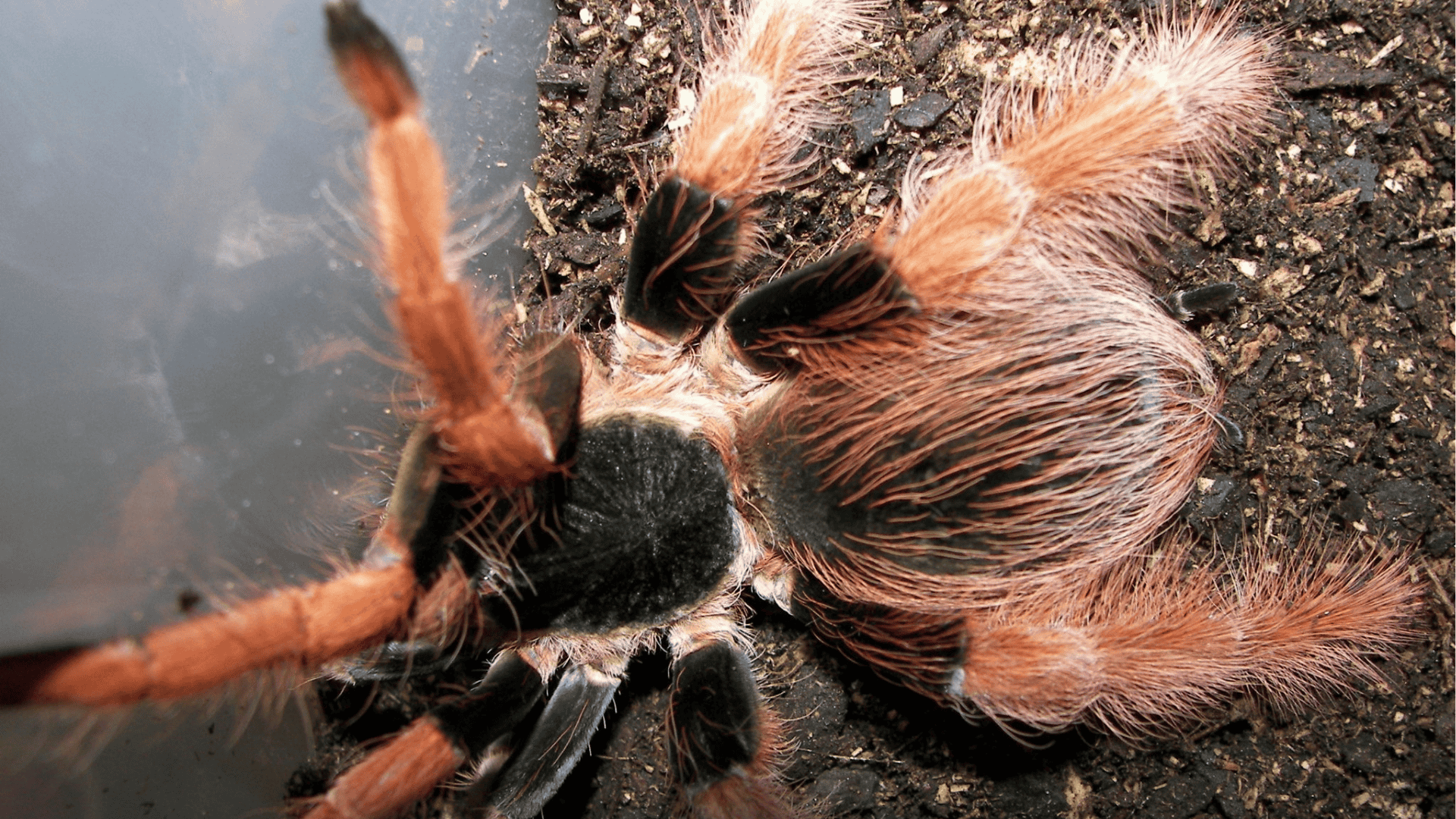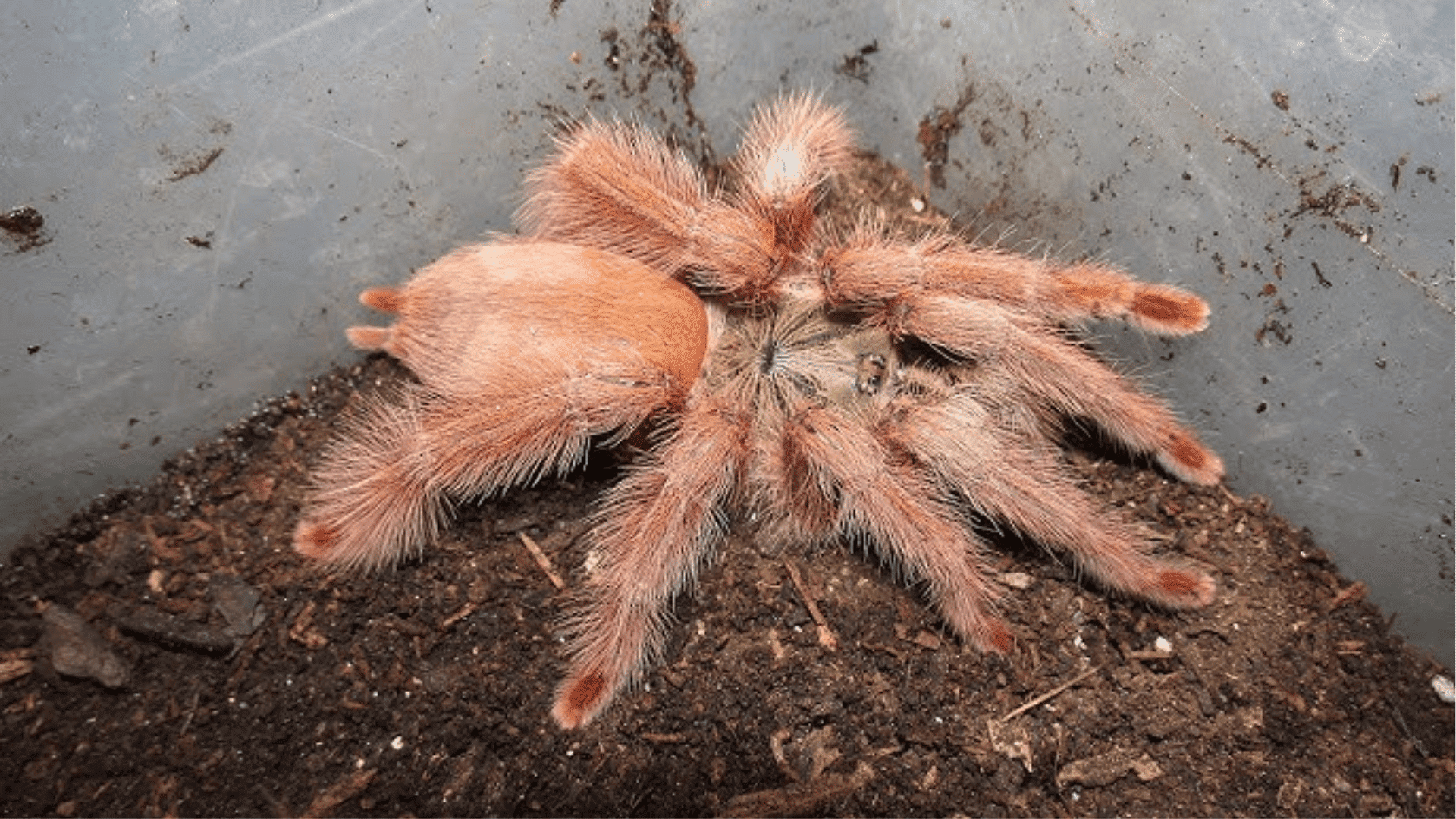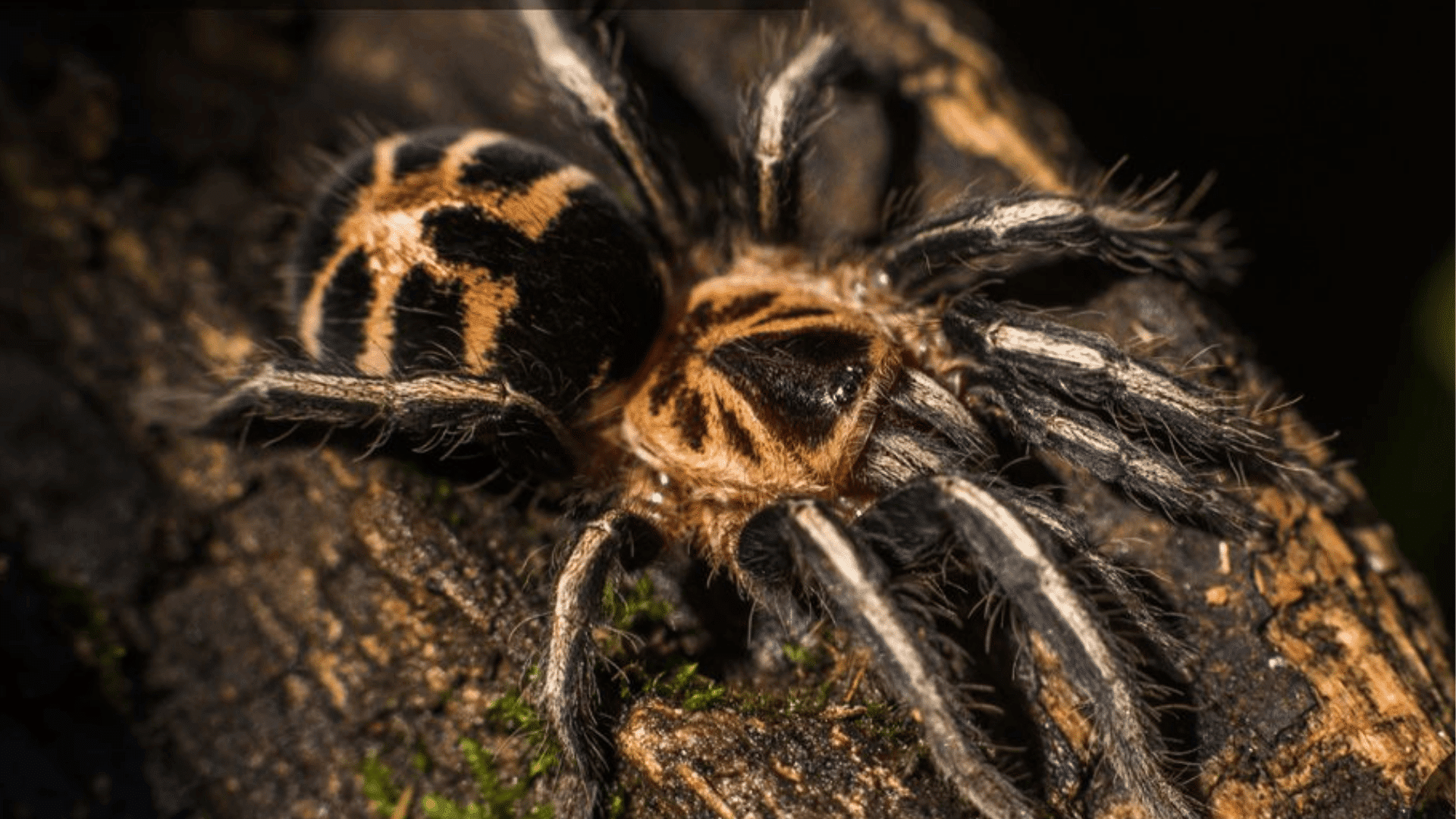Can spiders really walk on water and catch fish? Absolutely!
The Amazon rainforest hides eight-legged creatures that seem straight out of science fiction.
From giants with 12-inch leg spans to tiny acrobats jumping 50 times their body length, these arachnids possess abilities that would make superheroes jealous.
Some weave golden silk stronger than steel, while others change hunting tactics faster than you can blink.
Ready to meet some of these remarkable creatures that prove spiders are way cooler than you ever imagined?
1. Goliath Birdeater (Theraphosa Blondi)
The Goliath Birdeater is the world’s heaviest spider, known for its vast size and strength.
Even though its name says “birdeater”, it rarely eats birds and instead munches on various small animals.
| WHAT | DETAILS |
|---|---|
| Family | Theraphosidae |
| Home | Tropical rainforests of Colombia and Brazil |
| Size | Leg span up to 12 inches (30 cm) |
| Food | Insects, small animals |
| Behavior | Lives on the ground, gets defensive when scared |
Cool Facts:
- Has special defensive hairs that kick off when threatened
- Hunts at night and drags prey back to its burrow
- Makes a hissing sound by rubbing its legs together
2. Brazilian Wandering Spider (Phoneutria Fera)
Known for its venomous nature, the Brazilian Wandering Spider (also called the Banana Spider) is highly aggressive and considered one of the most venomous spiders.
It actively hunts at night and often shows up in banana plants.
| WHAT | DETAILS |
|---|---|
| Family | Ctenidae |
| Home | South America (Brazil, Peru, Ecuador) |
| Size | Up to 5 inches (13 cm) leg span |
| Food | Insects, small animals |
| Behavior | Active at night, gets mean when threatened |
Cool Facts:
- Its bite can cause serious health problems for humans
- Doesn’t make webs; actively hunts on the forest floor
- Sometimes hides in clothes, shoes, and banana bunches
3. Pink Toe Tarantula (Avicularia Avicularia)
This tree-dwelling tarantula is admired for its pink-tipped feet and calm demeanor.
It lives in trees and builds silk hideouts among leaves.
| WHAT | DETAILS |
|---|---|
| Family | Theraphosidae |
| Home | South American rainforests |
| Size | 3.5 to 5 inches (9–13 cm) leg span |
| Food | Insects, small animals |
| Behavior | Lives in trees, pretty chill |
Cool Facts:
- Needs really humid environments to survive
- Can expel waste when it feels threatened
- Popular as a pet because it’s so calm
4. Salmon Pink Birdeater (Lasiodora Parahybana)
This is one of the largest tarantulas, known for its rapid growth and impressive size.
It lives on the ground and is usually pretty gentle, making it a favorite among spider fans.
| WHAT | DETAILS |
|---|---|
| Family | Theraphosidae |
| Home | Northeastern Brazil |
| Size | Up to 10-11 inches (25-28 cm) leg span |
| Food | Insects, small animals |
| Behavior | Lives on the ground, pretty gentle |
Cool Facts:
- Has pink-red hair on a dark body
- Builds burrows or hides under stuff on the ground
- Popular with tarantula lovers because of its size
5. Golden Silk Orb-Weaver (Trichonephila Clavipes)
Famous for its golden-colored silk and incredible web structures, this spider helps control bug populations.
| WHAT | DETAILS |
|---|---|
| Family | Araneidae |
| Home | Southern US to Argentina |
| Size | Females up to 1.5 inches (4 cm) in body length |
| Food | Flying insects |
| Behavior | Builds webs, not aggressive |
Cool Facts:
- Produces seven different silk types, including golden threads
- Females are significantly larger than males
- Webs can span several feet and get rebuilt daily
6. Silver Argiope (Argiope Argentata)
You can spot this spider by its silvery body and special web patterns.
It’s commonly found in gardens and forests throughout the Americas.
| WHAT | DETAILS |
|---|---|
| Family | Araneidae |
| Home | Americas |
| Size | Medium-sized |
| Food | Flying insects |
| Behavior | Builds webs, active during the day |
Cool Facts:
- Creates distinctive zigzag patterns in its webs
- Sometimes the female eats the male after mating
- Uses UV-reflecting silk to attract prey
7. Giant Fishing Spider (Ancylometes Bogotensis)
These water-loving spiders are like the ninjas of the Amazon waterways!
They can walk on water and catch small fish, making them some of the coolest hunters in the rainforest.
| WHAT | DETAILS |
|---|---|
| Family | Pisauridae |
| Home | Amazon Basin waterways |
| Size | Up to 4 inches (10 cm) leg span |
| Food | Small fish, water insects, and tadpoles |
| Behavior | Semi-aquatic, hunts on the water surface |
Cool Facts:
- Can walk on water using surface tension
- Dives underwater to catch prey and escape predators
- Carries its egg sac in its jaws until the babies hatch
8. Amazon Jumping Spider (Salticidae Spp.)
These tiny acrobats are like the superheroes of the spider world! With their huge eyes and incredible jumping abilities.
They are some of the most active and fun spiders to watch in the Amazon.
| WHAT | DETAILS |
|---|---|
| Family | Salticidae |
| Home | Amazon rainforest trees and plants |
| Size | Small, usually 0.5 to 1 inch (1.3-2.5 cm) |
| Food | Small insects, flies |
| Behavior | Active hunters, great jumpers |
Cool Facts:
- Can jump up to 50 times their body length
- Have the sharpest eyesight of any spider species
- Don’t build webs but hunt by stalking and pouncing
9. Trapdoor Spider (Ummidia Spp.)
Masters of surprise attacks, these spiders create hidden burrows with camouflaged doors, waiting patiently for unsuspecting prey.
| WHAT | DETAILS |
|---|---|
| Family | Halonoproctidae |
| Home | Tropical and subtropical regions |
| Size | Medium-sized |
| Food | Insects, small bugs |
| Behavior | Lives in burrows, an ambush predator |
Cool Facts:
- Builds silk-lined burrows with hidden trapdoors
- Waits motionlessly for prey to walk by
- Rarely seen due to its secretive lifestyle
10. Colombian Giant Tarantula (Megaphobema Robustum)
The Colombian Giant Tarantula, also known as the Colombian Giant Redleg, is a striking species found in the tropical rainforests of Colombia and Brazil.
| WHAT | DETAILS |
|---|---|
| Family | Theraphosidae |
| Home | Tropical rainforests of Colombia and Brazil |
| Size | Leg span up to 8 inches (20 cm) |
| Food | Insects, small animals |
| Behavior | Lives on the ground, gets defensive when threatened |
Cool Facts:
- Has a unique defense move where it spins rapidly or lunges
- Prefers burrowing and stays hidden during daylight hours
- Females can live up to 10 years, males have shorter lifespans
11. Orange Tree Spider (Tapinauchenius Plumipes)
The Orange Tree Spider is a tree-dwelling tarantula found in French Guiana.
Notable for its bright orange legs and jumpy nature, this species is often found in tree holes within the lowland rainforests.
| WHAT | DETAILS |
|---|---|
| Family | Theraphosidae |
| Home | Lowland rainforests of French Guiana |
| Size | Females up to 5.5 inches (14 cm) |
| Food | Insects, small animals |
| Behavior | Lives in trees, jumpy and defensive |
Cool Facts:
- Lacks the defensive hairs that other tarantulas possess
- Females can live up to 18 years, males have shorter lifespans
- Famous for its vibrant orange coloration, especially on its legs
12. Venezuelan Dwarf Beauty Tarantula (Cyriocosmus Leetzi)
A small, striking tarantula species known for its metallic orange and black body with unique patterns.
Native to Venezuela, it is among the most colorful dwarf tarantulas.
| WHAT | DETAILS |
|---|---|
| Family | Theraphosidae |
| Home | Venezuela, tropical forests |
| Size | Small (up to 5 cm) |
| Food | Small insects |
| Behavior | Ground-dwelling, burrows for shelter |
Cool Facts:
- Known for its vibrant coloration despite its tiny size.
- Popular in the exotic pet trade due to its beauty and manageable temperament.
- Females live up to 10 years, males around 3–4 years.
13. Ghost Tree Spider (Amazonius Burgessi)
A tree-living tarantula found in the lowland rainforests of Colombia, Peru, and probably Ecuador.
Its faded brown to gray color and long light hairs give it a ghostly appearance, making it a unique species in the Amazon.
| WHAT | DETAILS |
|---|---|
| Family | Theraphosidae |
| Home | Lowland rainforests of Colombia, Peru, and Ecuador |
| Size | Medium-sized |
| Food | Insects, small animals |
| Behavior | Lives in trees, jumpy |
Cool Facts:
- Named for its ghostly appearance because of its pale color.
- Often found in tree holes, where it builds silk hideouts.
- Females can live up to 15 years, while males don’t live as long.
Next time you see a spider, take a moment to appreciate its role in nature’s big picture. Even the ones in your garden are distant cousins to these rainforest superstars!

